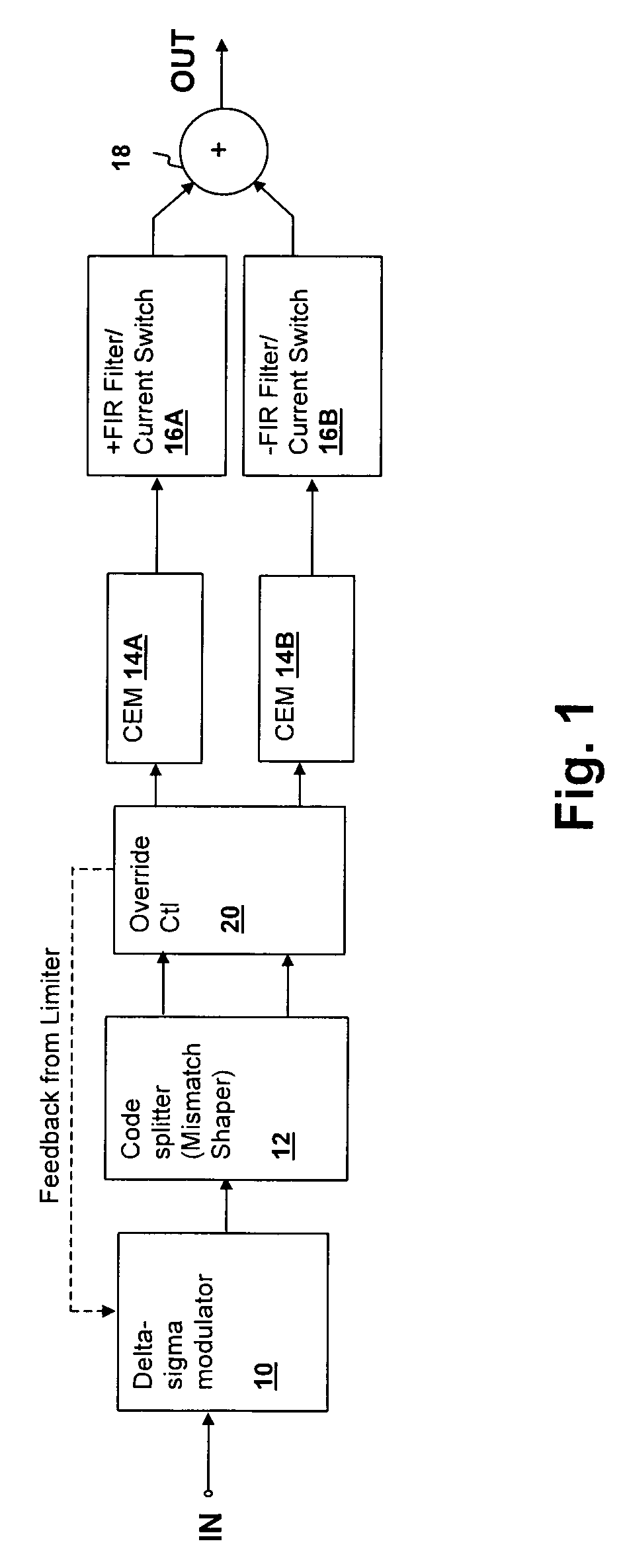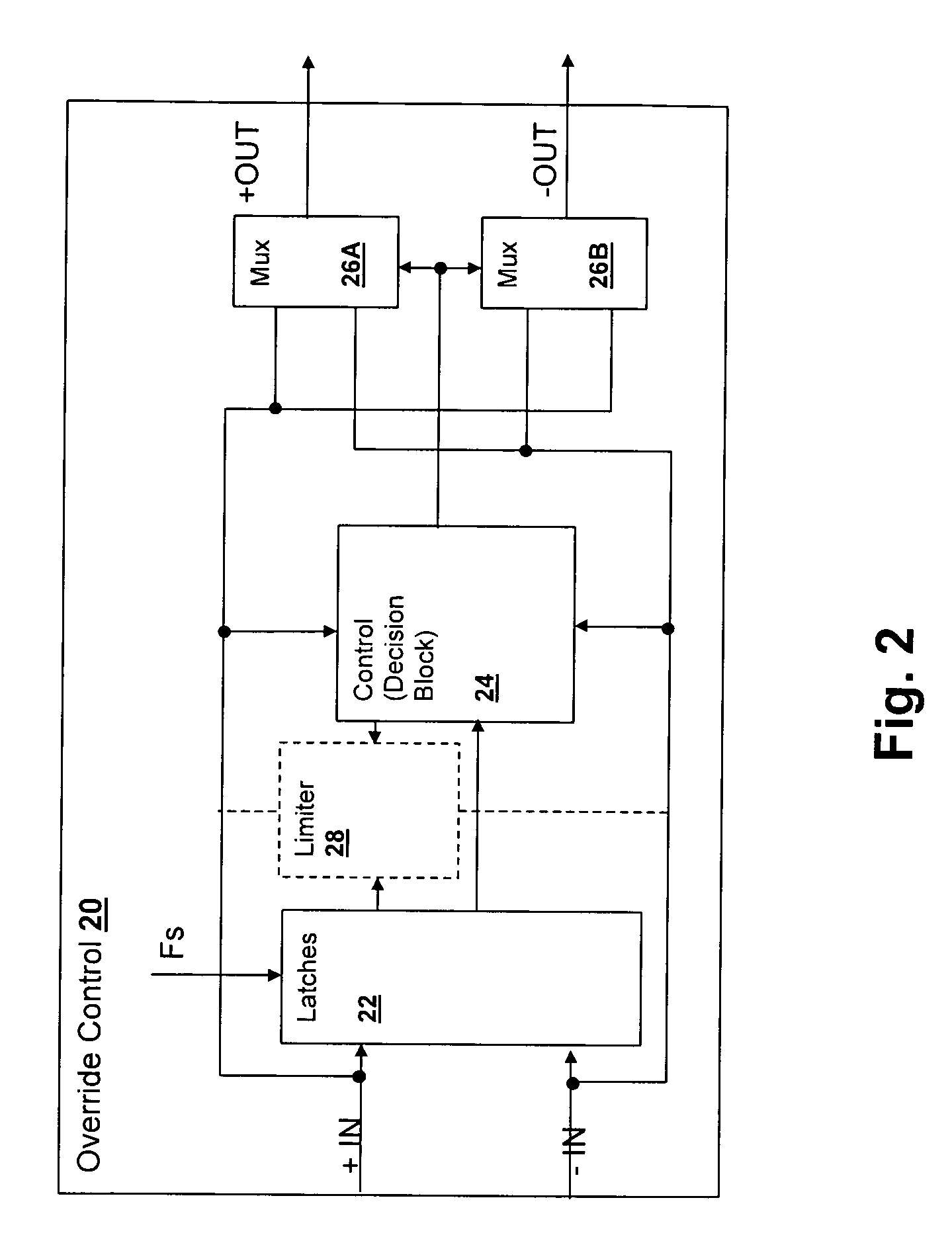Constant edge-rate ternary output consecutive-edge modulator (CEM) method and apparatus
a consecutive edge modulator and constant edge rate technology, applied in the field of consecutive edge modulators, can solve the problems of low attenuation of artifacts introduced by alternation, distortion and non-linearity, and simple alternation is generally undesirabl
- Summary
- Abstract
- Description
- Claims
- Application Information
AI Technical Summary
Benefits of technology
Problems solved by technology
Method used
Image
Examples
Embodiment Construction
[0021]The present invention encompasses a method and apparatus for producing a ternary consecutive edge modulated signal having an extended dynamic range, while maintaining a constant edge rate. The dynamic range is extended without distortion or with reduced distortion by violating the code splitter's ordinary assignment of the remainder count portion of CEM codes (the extra count in odd counts) in a dual-stream CEM that implements a ternary CEM. The remainder count assignment is generally made by a mismatch shaper that takes the output of the quantizer of a delta-sigma modulator noise-shaper and assigns codes between two pulse outputs provided by corresponding CEMs according to the mismatch shaper's response and the code history. However, other remainder count assignment mechanisms may be used to assign the remainder counts and the present invention extends to any multi-stream CEM in which codes are reassigned between the streams to avoid sequentially adjacent maximum or minimum c...
PUM
 Login to View More
Login to View More Abstract
Description
Claims
Application Information
 Login to View More
Login to View More - R&D
- Intellectual Property
- Life Sciences
- Materials
- Tech Scout
- Unparalleled Data Quality
- Higher Quality Content
- 60% Fewer Hallucinations
Browse by: Latest US Patents, China's latest patents, Technical Efficacy Thesaurus, Application Domain, Technology Topic, Popular Technical Reports.
© 2025 PatSnap. All rights reserved.Legal|Privacy policy|Modern Slavery Act Transparency Statement|Sitemap|About US| Contact US: help@patsnap.com



